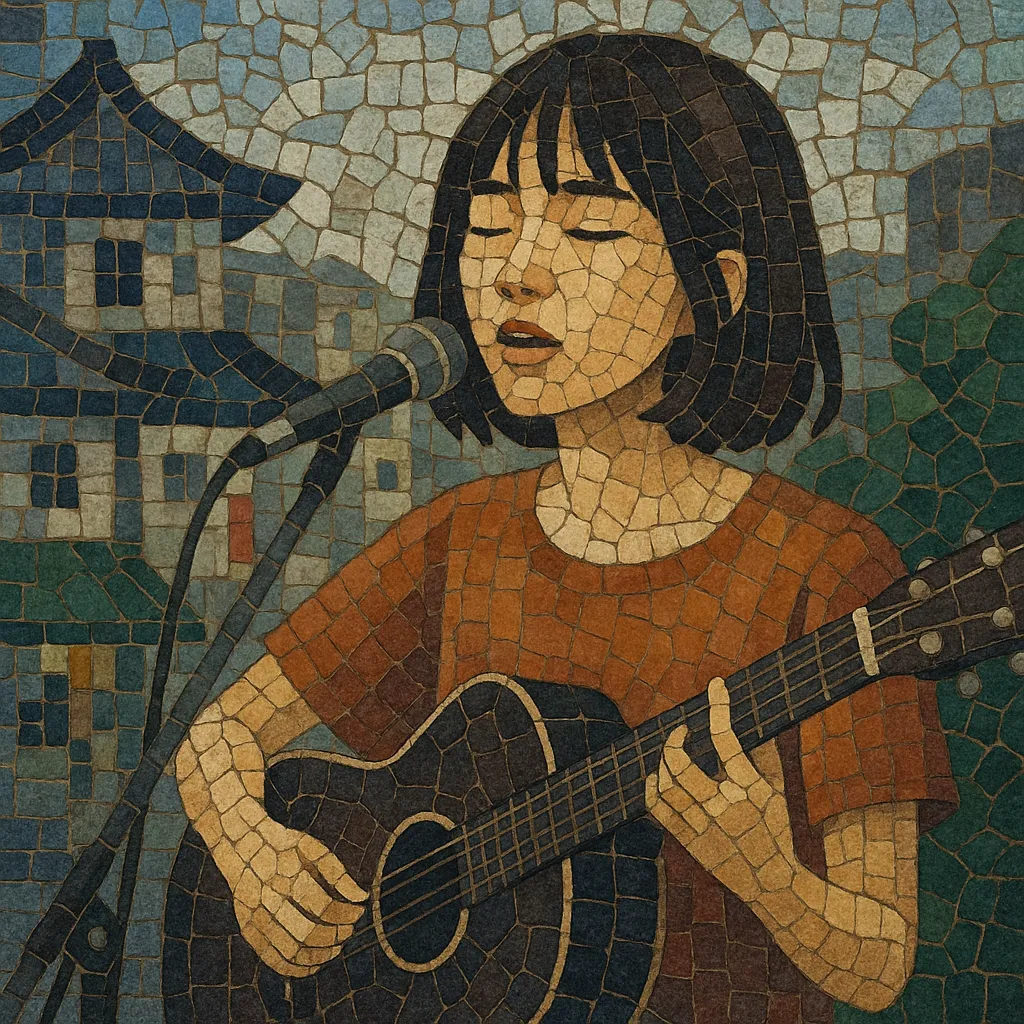Japanese indie refers to Japan’s independent rock and pop scenes that developed outside the major-label idol system. It blends DIY production and small-label distribution with a wide palette of sounds, from jangly guitar pop and post‑punk angularity to dreamy shoegaze and lo‑fi recordings.
The scene is anchored by “live houses” (small venues) around Tokyo (Shimokitazawa, Koenji, Shinjuku), Osaka, Kyoto, and Fukuoka. Artists often sing in Japanese (sometimes mixing English), with introspective, everyday-life lyrics and arrangements that prize dynamics, texture, and melody over flashy virtuosity.
Aesthetically, Japanese indie inherits Western indie rock’s DIY ethos while retaining local melodic sensibilities shaped by kayōkyoku and city pop. Production ranges from 4‑track cassette grit to clean, minimal studio mixes, but the emphasis remains on authenticity, atmosphere, and the energy of the live circuit.
Japanese indie (“indies” in local parlance) emerged in the 1980s as musicians reacted to the dominance of major-label kayōkyoku and the rise of idol pop. Inspired by imported punk, post‑punk, and new wave, bands began self‑releasing tapes and 7" singles, organizing shows at small “live houses,” and circulating through fanzines and mail‑order networks. The DIY model allowed stylistic freedom—from noisy, experimental guitar music to melodic, jangly guitar pop.
Through the 1990s, the cassette/CD‑R underground blossomed. Acts like Shonen Knife found international cult audiences; elsewhere, Number Girl, Fishmans, and other Tokyo/Kansai bands crystallized a specifically Japanese strain of indie that could be both textural and song‑forward. Indie labels, record shops, and live houses formed resilient micro‑ecosystems. Parallel scenes (noise, Shibuya‑kei, and city‑pop‑informed guitar pop) frequently intersected on bills and compilations.
In the 2000s, the internet, indie retail culture, and netlabels amplified reach. Bands such as Quruli and Asian Kung‑Fu Generation bridged indie aesthetics and wider audiences, while anime tie‑ins (e.g., the Pillows’ music for FLCL) exported J‑indie textures abroad. Math‑rock/post‑rock circles (e.g., toe) and sharper, alternative guitar bands coexisted, keeping the live‑house circuit vibrant.
Streaming, Bandcamp, and social media lowered barriers, enabling bedroom‑to‑club pipelines and international listening. A shoegaze/dream‑pop revival (e.g., Kinoko Teikoku) refreshed textures, while newer indie pop and lo‑fi songwriters expanded the palette. The scene remains decentralized and diverse—rooted in local venues and small labels, yet increasingly connected to global indie networks.


